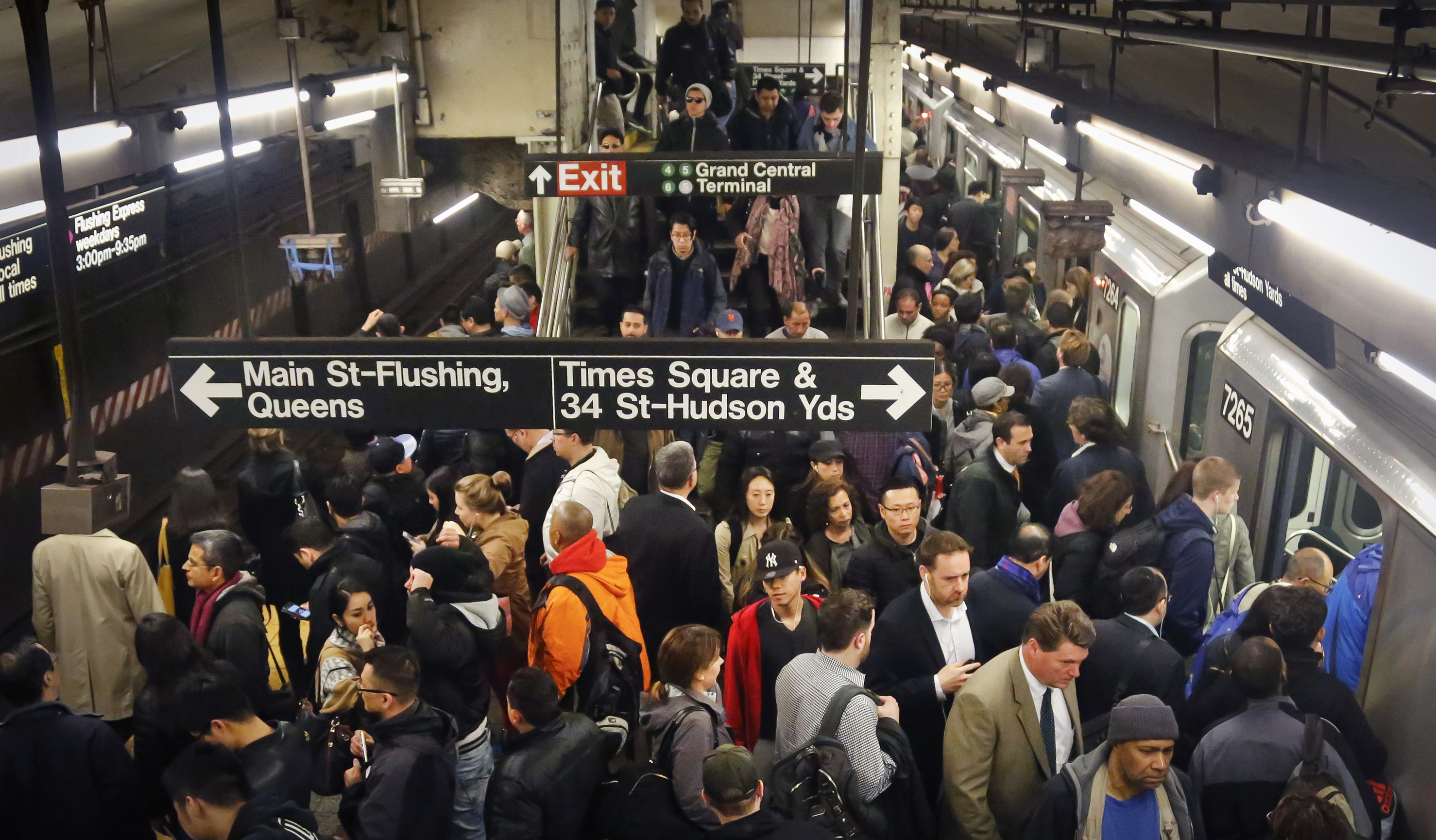
Commuters crowd a Grand Central subway station platform in New York in 2016
It was the summer of 2017. New Yorkers never knew when we’d get anywhere. We texted “On the subway.” There was no need for “I’m going to be late.” That part was obvious.
On platform after platform, searching “#MTA videos” had become one of my delayed-train pastimes. When I watched the waterfall at Bryant Park or the giant rat terrorizing travelers on the A train, I felt united in misery with my fellow commuters.
Nancy Gauss, the director of The New York Times video department, had sent me to a meeting with the Metro desk. Emma Fitzsimmons, Brian Rosenthal, and Michael LaForgia were working on a series of stories to explain the Metropolitan Transportation Authority’s recently-declared state of emergency.
I wasn’t optimistic for video possibilities. Questionable political decisions and bureaucratic snafus are not typically topics that scream VISUAL STORYTELLING. But then I saw Emma’s bullet list of key moments and decisions. “2015 – G Train derails due to crumbling wall. Subway shuts down for the first time ever and no one tells de Blasio.”
What if those notes were paired with favorite #MTA videos? The Metro team would produce a number of meticulous pieces detailing how the subway got so bad, but we thought an overview video combining their key findings might bring their reporting to a new audience. To do it, though, we’d need an army of collaborators.
Producer/editor Ora DeKornfeld spent 10 weeks bringing her creative genius to the video. Her work—along with editor Liz Deegan—earned the piece an Emmy news and documentary award for news editing.
Some visuals were easy to imagine: Governor Andrew Cuomo’s administration had forced the MTA to bail out three state-run ski resorts that were struggling after a warm winter. Ann Lupo made it into a stop-motion animation.
Other topics, like the bond issuance fees that were compounding the MTA’s debt, would be hard to visualize. Ora hired a friend to write a song about bond issuance fees and then play it inside a station. It’s the first time I’ve ever edited song lyrics for a documentary piece. (The woman who gave the “busker” some cash while he was being filmed, though? Totally spontaneous.)
To explain the origins of the MTA’s debt in 30 seconds, animator Aaron Byrd made simplified cutout animations. To offset some of the absurd humor of the social media videos, Ora interviewed New Yorkers who had changed jobs because of the delays or nearly missed dialysis appointments. And to bring a little hope to the outrage, Dahlia Kozlowsky found nostalgic material from when the subway had fallen into disrepair and risen to glory.
Since we published “Your Train is Delayed. Why?” in January of 2018, the subways are “no longer a daily disaster.” But if commuters wonder how New York still doesn’t have a modern subway system and they search “#MTA videos,” I hope our video helps them understand why.

